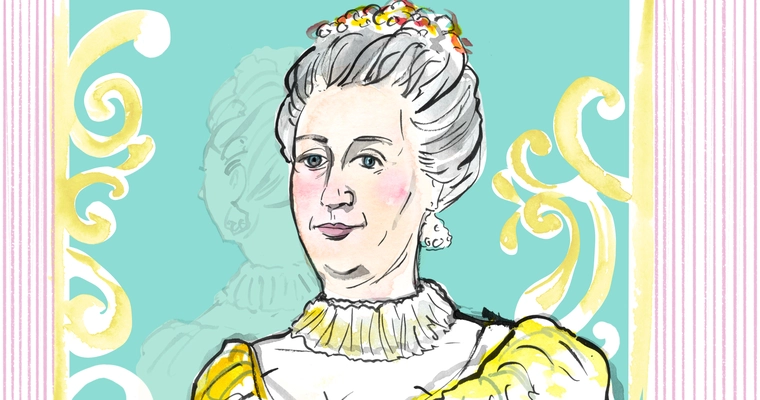Lover. Fighter. Throne stealer. Getting to know Catherine the Great

A minor royal who schemed her way to the throne. A woman who took lovers as she pleased. An “enlightened despot” who strove to develop Russia economically, politically, culturally, and intellectually. Here’s how Catherine the Great’s many lusts for life made her one of the most powerful women in history.
Royal roots. Today she’s known as “Catherine the Great,” but she was born Sophie Friederike Auguste, Prinzessin von Anhalt-Zerbst on April 21, 1729, in Stettin, Pomerania. Her father was part of the royal German family of Anhalt and two of her first cousins went on to become kings of Sweden.
Long live the Queen. Catherine the Great holds the record as the longest-ruling female leader of Russia. Her reign lasted 34 years, from 1762 to 1796.
Given away as a child. Catherine’s marriage to the heir to the Russian crown, Peter, Duke of Holstein-Gottorp, was arranged when she was just a little girl (i.e. it definitely wasn’t a love match). The marriage was the result of a lot of maneuvering by the adults around them, who wanted to strengthen the relationship between Russia and Prussia. Catherine met her future husband when she was just 10 years old and immediately disliked him. Unfortunately, their relationship never improved.
A lady with lovers. Rumor has it that dislike of her husband didn’t stop Catherine the Great from getting hers. Her list of lovers included generals, nobles, and counts, whom Catherine would keep around for as long as they interested her, then bribe with land and serfs when she tired of them. Her last lover was 40 years younger than she was. And thus, the legend of Catherine the Great as one of the lustiest of lusty ladies was born.
Coup-d’état. Even if he wasn’t often sharing her bed, Peter did end up serving a different purpose in Catherine’s life when he ascended the Russian throne in 1762, making his wife the empress consort. Six months after taking the throne, Peter was arrested and forced to cede the throne to Catherine in a meticulously planned coup d’état. Rallying both the military and the clergy, Catherine instated herself as the sole ruler of Russia. Her husband was assassinated eight days later.
Not your princess tiara. The crown created for Catherine’s coronation was bling that would make any royal or real housewife proud, and it’s still one of the most treasured objects in Russian history. Weighing only five pounds, the Imperial Crown of Russia has 75 pearls, 4,936 Indian diamonds, a 398.62-carat ruby, and a diamond cross. The design includes laurel and oak leaves to symbolize power and strength and two silver and gold half-spheres to represent the eastern and western Roman empires.
Commander-in-Chief. Russia was already powerful when Catherine seized the throne, but it became a world power under her rule. Through successful military campaigns, Catherine expanded the land mass of Russia by about 200,000 square miles. (That’s around the same size as the whole country of Thailand!)
Ladies helping ladies. As a follower of the Enlightenment, Catherine the Great was all about education and art—and she brought both to her adopted country. But while the thinkers of Western Europe were focusing quite literally on the enlightenment of man, Catherine was thinking about her fellow women as well. In 1764, she founded the Smolny Institute for Noble Maidens, which admitted young female nobles and eventually daughters of the petit-bourgeois as well.
It probably shouldn’t come as a surprise that such an unapologetically powerful and sexual woman would be the subject of some pretty weird rumors. Rumors aside, history shows that Catherine the Great earned her name during her long reign as empress of Russia.
XOXO,
Bedsider
P.S. Know what else is powerful? Knowing you’re covered against accidental pregnancy. If you’re still looking for the right birth control, we’re here to help.
How do you feel about this article?

Heat up your weekends with our best sex tips and so much more.